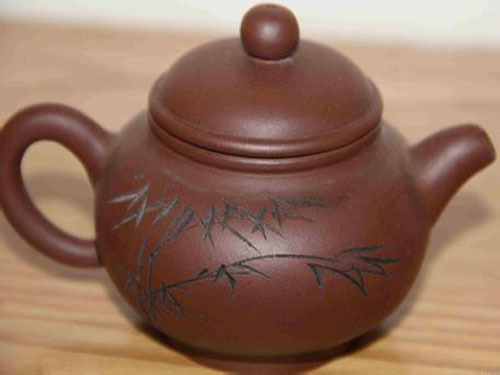Taiwan's return teapot collection inspiration

Some time ago, the “Taiwan Reflow Pot and the Young Artists' Purple Sand Art Excellence Exhibition†was held in Beijing. The highest auction record of 178.25 million yuan was created by the late Zisha Art Master Gu Jingzhou, and this time the artist participated in the exhibition. He was the master of Gu Jingzhou who had created the single highest transaction record of 12.88 million yuan. "The biggest mention of wall pots" (the latest transaction record of the latest kit is Gu Jingzhou's nine pieces of plum tea with more than 2800 million yuan, the highest single price is Gu Jingzhou's stone scoop pot of nearly 15 million yuan). At the same time, in addition to Gu Jingzhou's several masterpieces, it also includes the representative works of the late Zisha pot master Chiang Rong master and the purple sand boutiques of other contemporary masters and famous artists returning from Taiwan to the mainland.
"Refluxer" exhibition gives people an opportunity to appreciate "return to the classics"
The works of the “Reflow Pot†exhibition are basically the Zishahu works that were sold from the Yidu of Taoyuan to the Taiwan region in the late 1980s and 1990s. The Yixing Zisha industry has been cared and supported by governments at all levels since the founding of New China. After decades of development, in the early 1980s when the reform and opening up began, the industry entered the start-up phase of its most prosperous period. The old generation of Zisha, represented by Gu Jingzhou, and a group of excellent purple sand artists trained by them, have also been encouraged by the development of the times to enter a period of creative prosperity. Creative thoughts have been unprecedentedly active, and excellent works have emerged in an endless stream.
However, at the time when the Mainland was in the early stages of reform and opening up, economic development was still in its infancy. Therefore, at that time, the value of Chinese artworks, including the purple sand art works, had yet to be truly recognized in the market. At this time, Hong Kong, Macao, and Taiwan across the Taiwan Strait have relatively developed economies. The developed economy naturally promotes people's demand for culture and art, especially in Taiwan, because of the cross-strait barriers for decades, and the same Taiwanese people. Compatriots have accumulated a thirst for decades of culture, and the purple sand culture has integrated ceramic culture, tea culture, and many Chinese cultural elements such as poetry, painting, seal cutting, and sculpture. It is highly representative of Chinese culture and naturally becomes an expression of compatriots in Taiwan. The carrier of cultural and spiritual needs, the collection of Zishahu works, and the taste of Chinese traditional cultural classics have become an important part of the cultural life of Taiwan compatriots in that era.
Of course, in the market economy environment, the increase in the attention of art collections has naturally promoted the continuous increase of art collection prices. By the mid-1990s, the purple sand art market in Taiwan had reached the height of the 20th century. At that time, on the concept of people in the interior, the teapot was just a daily tea set or handicrafts. The value of some outstanding teapot works was not fully understood. At the same time, in the Taiwan market, the price of Zishahu works has been positioned at several thousand dollars. Tens of thousands of yuan and even several hundred thousand yuan. According to the laws of the market, most of the outstanding purple sand art works naturally flowed to Taiwan, and even the teapot enthusiasts in the Mainland could only appreciate these from pottery books and magazine pictures. Purple sand art work flowing to Taiwan. Time has entered the 21st century. With the pace of reform and opening up, the economy of the Chinese mainland has developed at a high speed and people's living standards have been greatly improved. While the material living conditions have improved, they have naturally higher demands on cultural and spiritual life. Therefore, in recent years, the Chinese mainland cultural and art market has entered a good era of great prosperity and great development. In accordance with the most basic laws of the development of the art market, the purple sand art that had flowed to the better economic environment in Taiwan has now returned to the mainland where economic construction has made great achievements. Through this “return pot†exhibition, we can finally appreciate These have left us for many years of "return to the classics."
BFE99 Medical Mask Melt Blown Non-woven Fabric
Medical Nonwovens,Medical Melt Blown Fabric,Bfe99 Melt Blown Nonwoven,Bfe99 Meltblown Nonwoven Fabric
Ningbo Dokee New Material Co., Ltd. , https://www.aumaterial.com